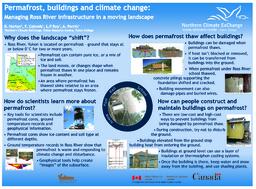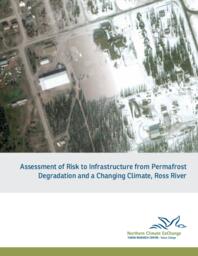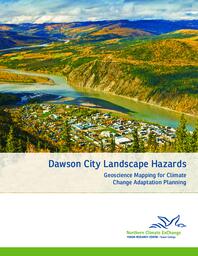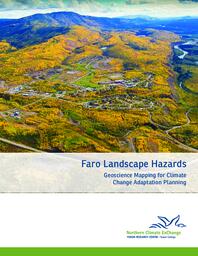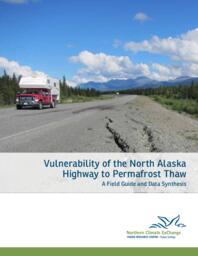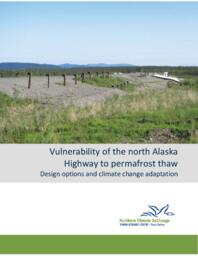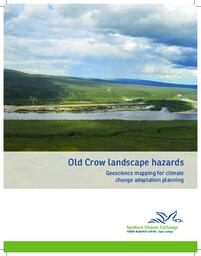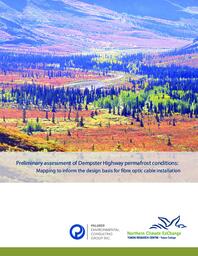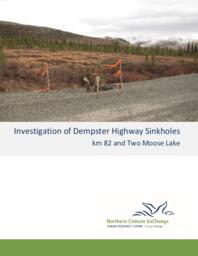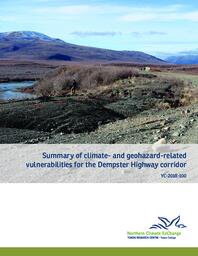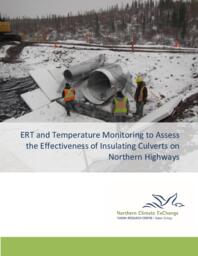Roy, Louis-Philippe
Person Preferred Name
Louis-Philippe Roy
ORCID
0000-0002-2612-0575
Affiliation
Related Works
Content type
Digital Document
Origin Information
Content type
Digital Document
Description / Synopsis
"Northern Canadian communities are at the forefront of climate change. Permafrost thaw is one of the major threats that they face. Many communities, particularly those within the discontinuous permafrost zone, have ground temperatures just below 0ºC. This makes them particularly susceptible to permafrost thaw under a changing climate. Permafrost thaw and the resulting ground shifting and changes in hydrology in these areas may have broad-reaching consequences for people's ability to travel on the land and on roads, access to traditional food sources, and stability of infrastructure, among other things. This report focuses on the effect of permafrost thaw on the stability of buildings operated by Government of Yukon in Ross River, a small community in south-central Yukon" -- from Introduction.
Origin Information
Content type
Digital Document
Description / Synopsis
Climate change is a significant challenge for northern communities, where the impacts of a warming climate are already having considerable effects (Huntington and Weller, 2005). Many people living in small, isolated communities in northern Yukon are concerned about climate-related risks in their regions. Because adverse impacts are a reality, it is important to implement measures to reduce or moderate the negative effects of climate change – in other words, to implement climate change adaptation strategies.
Origin Information
Content type
Digital Document
Description / Synopsis
Climate change is a significant challenge for northern communities, where the impacts of a warming climate are already having considerable effects (Huntington and Weller, 2005). Many people living in small, isolated communities in northern Yukon are concerned about climate-related risks in their regions. Because adverse impacts are a reality, it is important to implement measures to reduce or moderate the negative effects of climate change – in other words, to implement climate change adaptation strategies.
Origin Information
Content type
Digital Document
Description / Synopsis
Climate change is a significant challenge for northern communities, where the impacts of a warming climate are already having considerable effects (Huntington and Weller, 2005). Many people living in small, isolated communities in northern Yukon are concerned about climate-related risks in their regions. Because adverse impacts are a reality, it is important to implement measures to reduce or moderate the negative effects of climate change – in other words, to implement climate change adaptation strategies.
Origin Information
Content type
Digital Document
Description / Synopsis
Yukon, Alaska and northern British Columbia depend heavily on road transportation to link communities and connect industrial activities to international markets. The Alaska Highway is the central transportation corridor in Yukon. It is crucial to maintaining and expanding economic development, the quality of life of the population and international ties. In the context of current and anticipated climate change, permafrost temperature has warmed significantly in northern territories and is expected to continue to rise (SNAP 2014). The stability of northern transportation infrastructure may be compromised by changes in permafrost, particularly in areas where the soil contains large amounts of ice. This may lead to negative impacts on economic development, including increasing the complexity and cost of road maintenance and the price of shipping goods in the North.
Origin Information
Content type
Digital Document
Description / Synopsis
The Alaska Highway between Burwash Landing and the Yukon/Alaska border is underlain by extensive discontinuous, warm and frequently ice-rich permafrost. The disturbance caused by construction of the road and climate warming has already led to the thawing of permafrost, which has had an impact on the road. Some sections of the highway have experienced longitudinal cracking, embankment failure, differential settlement and even complete collapse. In order to better understand these issues, the Yukon Government Department of Highways and Public Works (HPW) has partnered with the Northern Climate ExChange in a four-year project (2012-2016) to assess permafrost sensitivity to thaw under the northern 200 km of the Alaska Highway. Since its construction, this section of highway has been affected by permafrost thaw. In the context of current and anticipated climate change, permafrost temperature is warming and is expected to continue to rise (SNAP 2014). Faster and more extensive permafrost thaw will result in an increase of frequency and magnitude of the damage sustained by the highway.
Origin Information
Content type
Digital Document
Description / Synopsis
Climate change is a significant challenge for northern communities, where the impacts of a warming climate are already having considerable effects (Huntington and Weller, 2005). Many people living in small, isolated communities in northern Yukon are concerned about climate-related risks in their regions. Because adverse impacts are a reality, it is important to implement measures to reduce or moderate the negative effects of climate change – in other words, to implement climate change adaptation strategies.
Origin Information
Content type
Digital Document
Description / Synopsis
In cold climates such as central and northern Yukon, construction at a site must account for permafrost characteristics and implement design adaptations to ensure the resilience of the infrastructure, or risk costly repairs and interruption to services. The proposed fibre optic link from Inuvik to Dawson City will cross a vast area of permafrost. The challenges associated with construction of this line will be compounded because the cable is buried and because the infrastructure crosses hundreds of kilometres of terrain where there is little known about the nature of the permafrost. Existing highway infrastructure in the region is already affected by permafrost degradation.
Origin Information
Content type
Digital Document
Description / Synopsis
This report presents the results of a project that aims to understand and, if possible, recommend actions to remediate the issues caused by the formation of sinkholes at km 82 and km 102-103 of the Dempster Highway. At km 82, this has resulted in sudden collapse of the right-hand side driving surface of the highway. Major sinkholes have been repaired at this location on at least two occasions (June 2014 and Aug 2014) and the culvert at the site was replaced in October 2014. Undated photos suggest earlier sinkholes have formed at this location (SRK Consulting, 2014). Subsidence was also repaired in August 2015. At km 102-103, there has been general subsidence and sinkhole formation along the left-hand side of the road. Subsidence between km 102 and 103 has been regularly repaired as part of routine highway maintenance and is therefore not documented. At this site, Two-Moose Lake is now encroaching on the road embankment.
Origin Information
Content type
Digital Document
Description / Synopsis
The Dempster Highway is the only road connection to the western Arctic. Now connected with the Inuvik-Tuktoyaktuk Highway, it is part of the infrastructure linking southern Canada with the Arctic Ocean. Extensive reconstruction of the Dempster Highway has been completed on the NWT side of the territorial border in response to degradation of the road surface and embankment. Recognizing the need to ensure year-round availability of the Dempster Highway in the context of increasing traffic and a changing climate, Yukon Government Department of Highways and Public Works (HPW) has initiated a project to create a functional plan that specifically considers contributions of climate change to geohazards along the highway. Research and analysis required to assess climate and geohazard vulnerability have been carried out by the Northern Climate ExChange, part of the Yukon Research Centre at Yukon College, feeding into the functional planning process carried out by an engineering consultant. This report is a summary of climate- and geohazard-related vulnerabilities for the highway corridor.
Origin Information
Content type
Digital Document
Description / Synopsis
Heat transfer into the ground at highway culvert locations can lead to the thawing of permafrost, damaging infrastructure, shortening its lifespan, and increasing maintenance costs. The Dempster Highway in the northern Yukon experiences multiple culvert failures attributed to permafrost thaw. The Yukon Government Department of Highways and Public Works wants to further understand the problem and test potential mitigation methods. A necessary culvert replacement at km 381 provided the opportunity to trial the use of a layer of rigid foam insulation under the new culvert, with the intention of providing an insulating layer between the culvert and the permafrost underneath. Permafrost researchers at the Northern Climate ExChange (NCE) developed an approach to monitor the effectiveness of the insulating layer using a combination of temperature and electrical resistivity monitoring.
Origin Information

